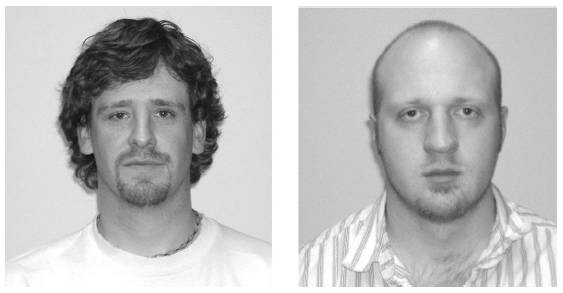Background: A study in Psychonomic Bulletin and Review ("Who do you look like? Evidence of facial stereotypes for male names," Lea, Thomas, Lamkin, & Bell, 2007) presented evidence that "people use facial prototypes when they encounter different names." Participants were given two faces and had to choose which one was Bob and which was Tim. The researchers wrote that their participants “overwhelmingly agreed” on which face belonged to Bob and which face belonged to Tim, but did not provide the exact results of the study. [The men in the pictures are not real people. In the first of two studies reported in this paper, people were given a computer and software that allowed them to create faces. The people were told to create a face/picture of a man who looks like a "Tim" and create a face/picture of a man who looks like a "Bob." The researchers then took a composite of the "Tim" and "Bob" pictures these people created. The composite faces are the pictures you saw.]
In this lab, you will examine numerical and graphical summaries of your class results for this study. In particular, we will focus on whether there is convincing of a genuine tendency to identify Tim as the face on the left. Note: Some of you were asked about Bob and Tim and the rest of you were asked about Tim and Bob.
Research Question: Do college students use facial prototypes when they encounter different names?
Goals: To investigate this research question and draw conclusions through simple numerical and graphical summaries of your class results and through exploration of the concept of "statistical significance." In other words, apply the Six Steps of a Statistical Investigation.
Notes:
- In this lab you will be asked to use applets to explore the data and generate a "null distribution." These applets should run on all platforms.
- These webpages are best viewed "maximized" (click the Maximize tab in the upper right).

